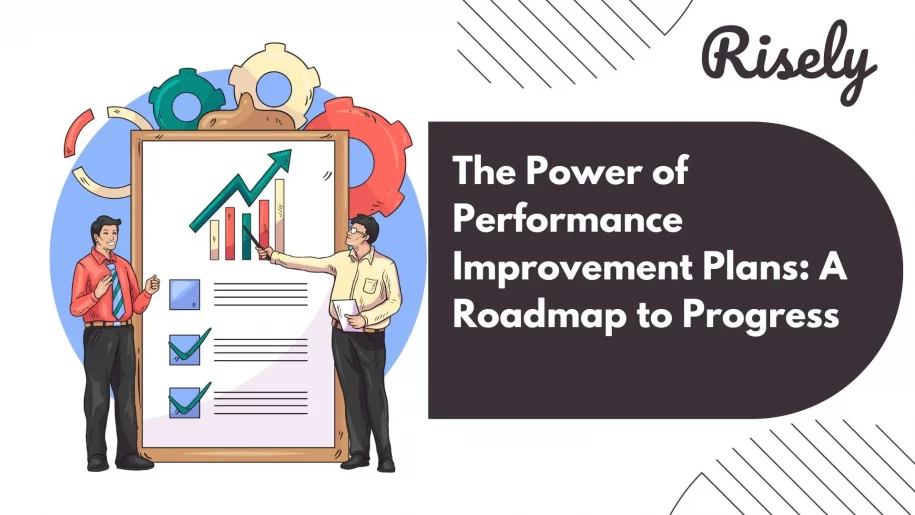The Power of Performance Improvement Plans: A Roadmap to Progress
In the ever-evolving world of work, where growth and adaptability are prized above all, we often need to enhance our skills, overcome challenges, and realize our full potential. Enter the Performance Improvement Plan (PIP), a powerful personal and professional development tool. This blog is your comprehensive guide to understanding the intricacies of Performance Improvement Plans, or PIPs for short. Whether you’re an HR professional, a manager, or an employee eager to rise above obstacles, this blog will equip you with the knowledge and insights needed to transform potential into performance excellence.What is a performance improvement plan?
A Performance Improvement Plan (PIP), sometimes called a Performance action plan or Corrective action plan, is a structured and formal document employers use to help employees improve their performance when they are not meeting the expected standards or performance goals. PIPs are typically implemented when an employee’s performance falls below the acceptable level and is not meeting the organization’s requirements. Performance Improvement Plans are a valuable tool for organizations to allow employees to improve their performance before resorting to more severe measures like termination. They are intended to be a constructive and supportive process aimed at helping employees succeed in their roles and contribute effectively to the organization.Purposes and importance of performance improvement plan
Performance Improvement Plans (PIPs) serve several critical purposes within an organization, and their importance cannot be understated:- Clarification of expectations: PIPs help clarify and specify employee performance expectations. When performance issues arise, it’s essential to provide clear guidance on what needs improvement and how it can be achieved.
- Opportunity for improvement: PIPs allow employees to improve their performance before facing more severe consequences, such as termination. They provide a structured framework for employees to address their shortcomings.
- Identifying underlying issues: Organizations can dig deeper into the root causes of performance issues by implementing a PIP. It may reveal factors such as a lack of training, resources, or personal challenges that must be addressed.
- Legal protection: A documented PIP process demonstrates that the organization has made reasonable efforts to help employees succeed. This can be crucial in employee disputes or legal challenges related to terminations.
- Employee Development: PIPs can be used as a tool for employee development. They can help identify areas where an employee can grow and acquire new skills, leading to personal and professional growth.
- Performance accountability: PIPs hold employees accountable for their performance, clarifying that subpar performance is unacceptable. This accountability can motivate employees to take the necessary steps to improve.
Benefits of Performance Improvement Plan
Performance Improvement Plans (PIPs) offer several benefits to both employees and organizations when implemented effectively:- Personal growth and development: PIPs can catalyze personal and professional growth. They often include training, mentoring, or other resources to help employees acquire new skills and enhance their capabilities.
- Enhanced communication: The PIP process encourages open communication between employees and their supervisors or managers. Regular feedback and discussions help build trust and understanding.
- Fair and consistent approach: PIPs demonstrate fairness and consistency in managing performance issues. All employees are given an equal opportunity to improve, reducing perceptions of favoritism or bias.
- Accountability: PIPs hold employees accountable for their performance, reinforcing the organization’s commitment to maintaining high work standards.
- Improved morale: In some cases, employees who complete a PIP experience a sense of accomplishment and increased job satisfaction, which can positively impact morale.
- Enhanced leadership skills: Managing employees through a PIP can help supervisors and managers develop leadership and coaching skills.
Other Interesting Reads
How to create a performance improvement plan?
Creating a Performance Improvement Plan (PIP) involves a structured process aimed at helping employees address performance issues and improve their work. Here are the steps to create an effective PIP: 1. Identify the performance issue: Clearly define the specific performance issue or area that needs improvement. Be objective and provide specific examples of where the employee falls short of expectations. 2. Set clear goals: Establish specific, measurable, achievable, relevant, and time-bound (SMART) goals for the employee. These goals should address the identified performance issue. 3. Determine support and resources: Identify what support, resources, or training the employee may need to achieve the goals outlined in the PIP. This could include additional training, mentoring, or access to specific tools or resources. 4. Create a timeline: Define a timeline for the PIP, including the start and end dates. The duration of a PIP can vary but is often set throughout 30, 60, or 90 days. 5. Outline expectations: Clearly state the expectations for the employee during the PIP, including what they need to achieve and how progress will be measured. 6. Communication plan: Develop a plan for regular communication and feedback. Specify how often the employee and manager will meet to discuss progress and what will be covered in these meetings. 7. Review and approval: The PIP should be reviewed and approved by HR or relevant organizational stakeholders to ensure that it is fair, objective, and compliant with company policies and legal requirements. 8. Meet with the employee: Schedule a private and confidential meeting with the employee to discuss the PIP. During this meeting:- Present the PIP document.
- Explain the purpose of the PIP and the desired outcome.
- Discuss the specific performance issues and goals.
- Address any questions or concerns the employee may have.
- Obtain the employee’s commitment to the plan.
What to avoid when creating a performance improvement plan?
When creating a Performance Improvement Plan (PIP), it’s crucial to approach the process carefully and avoid common pitfalls to ensure fairness, effectiveness, and a positive outcome. Some things to avoid when creating a PIP:- Lack of clarity: Be clear about the performance issue or the expectations in the PIP. Ensure the employee understands what needs improvement and how it will be measured.
- Subjectivity: Avoid relying solely on subjective assessments or personal opinions. Base the PIP on objective data and specific examples of performance issues.
- Surprise PIPs: Don’t surprise employees with a PIP out of the blue. Before implementing a PIP, there should be clear and documented communication about performance issues, including feedback and discussions.
- Inflexibility: Avoid rigid timelines or unrealistic goals. Ensure that the goals outlined in the PIP are achievable and that the timeline allows for reasonable improvement.
- Lack of employee input: Don’t create a PIP without involving the employee. Encourage open communication and allow the employee to provide input, ask questions, and express concerns during the PIP creation process.
- Excessive negativity: While addressing performance issues is essential, avoid overly negative or critical language in the PIP. Maintain a constructive and supportive tone.
- Lack of feedback and support: Don’t create a PIP and disappear. Regularly provide feedback, support, and guidance to the employee throughout the PIP period.
Conclusion
As we draw the curtains on our blog on Performance improvement plan (PIPs), it’s evident that these tools hold the potential to be transformative, not just for individuals seeking to overcome challenges, but for organizations striving for excellence. In this journey, we’ve uncovered the multifaceted nature of PIPs. They serve as bridges between potential and performance, between challenges and growth. PIPs are not mere formalities, but pathways paved with clarity, support, and opportunity. Throughout this blog, we’ve learned that the success of a PIP hinges on its fairness, transparency, and a genuine commitment to helping individuals succeed. It’s about fostering a culture where improvement is encouraged and celebrated, where challenges are not roadblocks but stepping stones.Ready to Elevate Your Team’s Performance?
Take free goal-setting assessment today and supercharge your performance improvement plans!
Other Related Blogs
Negotiation and Communication Skills: Top Examples for Managers to Learn From
Negotiation and Communication Skills: Top Examples for Managers to Learn From Are you ready to master the art of negotiation? Can you effectively communicate your ideas, needs, and concerns in…
Setting Smart Goals As A Team Manager (Examples & Tips)
Setting Smart Goals As A Team Manager (Examples & Tips) Many managers are finding success in achieving their goals by setting SMART goals. However, many fail to make them a…


